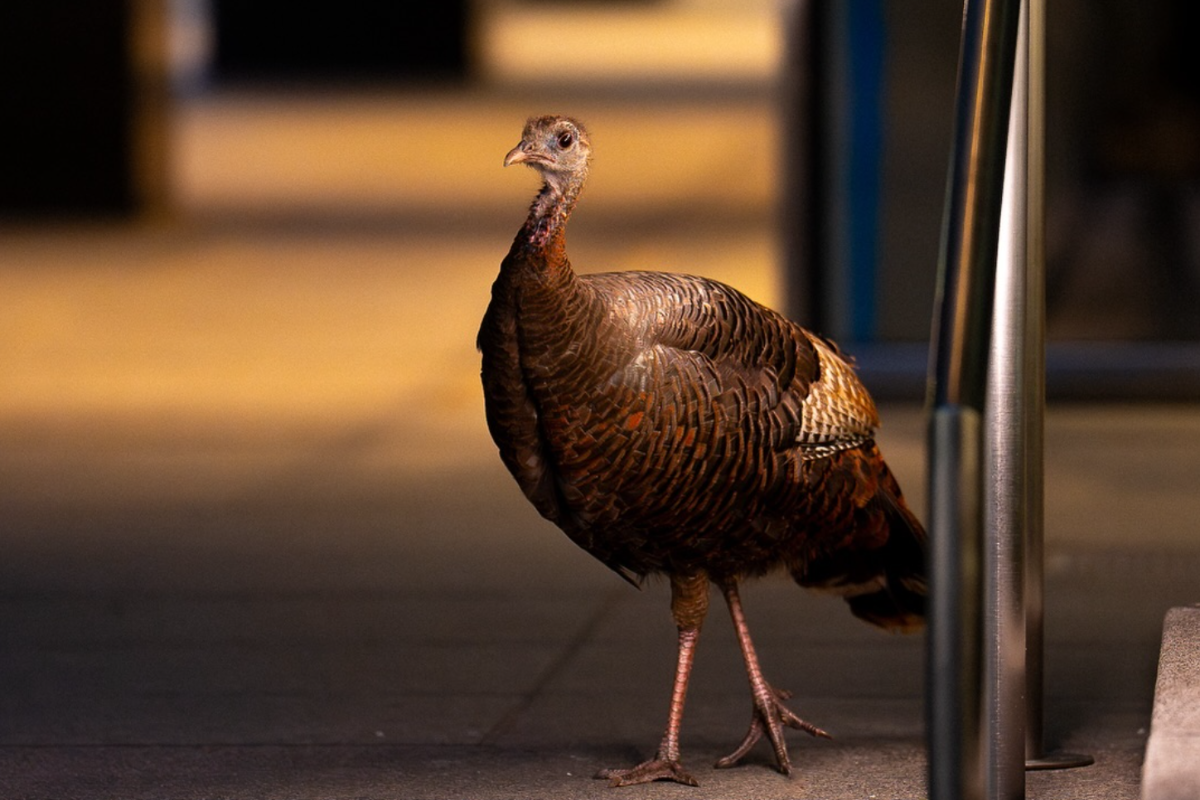Staff reports
While Astoria the wild turkey was capturing the hearts and minds of everyone in New York City this past spring—not to mention bird watchers around the world—the simpletons at the NYS Dept. of Environmental Conservation and some hunting organizations hosted “Turkey Hunting 101” at the upscale outdoor clothing retailer Filson NYC.
You can’t make this stuff up!
It really goes to show how desperate the dying hunting industry is. Overall, the U.S. hunting industry has failed to attract new hunters—a measly 4 percent of the population in the United States hunts, and that has remained the same for the last 11 years. In New York, only 700,000 out of 19.5 million residents enjoy slaughtering wildlife for fun.
As people continued to be enamored by Astoria’s activities—including traversing city streets, roosting in Park Avenue trees and landing at Saks Fifth Avenue before settling at Roosevelt Island— these knucklheads were trying to recruit people to get started on their turkey hunting journey by teaching them about “ethical” shot practices, post-hunt protocols and transportation logistics pertinent to city dwellers.
While they were touting how few hunting experiences can rival the excitement as a turkey approaches a hunter, the rest of NYC was relishing the excitement of getting to know Astoria as their fellow New Yorker. She was humanizing humans, and these hunters were trying to recruit more people to make fools of themselves.
As Priscilla Feral, president of Friends of Animals, mentioned in her In My View Column, “fanning” permits these goofballs to use and hide behind a gobbler decoy—they can be foldable plastic or inflatable— and advance toward the turkey to trick him into thinking they are a turkey so he’ll charge them and be in shooting range.
It’s pitiful.
What’s equally pathetic is in 2022, Maysville High School, an hour’s drive north of Kansas City, Missouri, added an elective farm-to-table course that teaches students to take freshly killed animals from the field to the classroom and into the kitchen.
Talk about a gory way to reinvigorate hunting in Missouri, where there continues to be a decline of hunting and fishing licenses purchased. The number has dropped by more than 4,000 over the past five years, according to the Missouri Department of Conservation.
Missouri currently has a puny 509,963 hunters out of a population of 6.21 million. At press time the MDEC was taking public comments on its plan to boost permit prices for hunting, fishing and trapping because of the decline in hunters.
Other state wildlife agencies are feeling the financial shortfall of the dying off of hunting and fishing.
Michigan’s legislature has had to dig into general-tax coffers to save some of the state’s wildlife projects, while other key programs, such as protecting bees and other pollinating creatures, remain “woefully underfunded,” according to an article in The Washington Post.
Some states, including Missouri, are directing sales tax revenue to conservation. For every $8 spent on taxable items, one penny goes to conservation, including things like wetland restoration, invasive plant removal and recovery of the Eastern and Ozark hellbenders, two imperiled salamander species.
Colorado’s wildlife commission shakeup
To reach out to the urban, non-hunting public with a positive, friendly message about hunting, several years ago Colorado’s Wildlife Council started a “Hug a Hunter” TV ad campaign.
What an oxymoron. There’s nothing positive and friendly about hunting, which is a crime against nature.
The ads tried to brainwash the public into thinking that protecting wildlife and habitat preservation can only be funded by hunters and their license fees.
Of course, that’s ludicrous.
What’s giving us hope is a shakeup at the Colorado Wildlife Commission earlier this year—animal advocates were appointed to the agency.
The hunting industry tried to muster people to flood state senators with emails and phone calls urging a “no” vote on the appointees, arguing the new commissioners lacked outdoor recreation experience and their work as animal advocates meant they had biases and could not adequately represent the interests of hunters and anglers.
What a bunch of hypocrites.
Most state wildlife agencies and commissions in the United States are filled to the brim with people who call hunting conservation and are biased against letting wildlife flourish in their own way while simultaneously ignoring the input of wildlife watchers.
“I hope that the new commissioners will move CPW in the right direction—away from the narrow focus on hunting and fishing and toward protecting the health of Colorado’s ecosystems, the animals who call it home and the people who respectfully enjoy Colorado’s amazing outdoors,” said Jennifer Best, director of Friends of Animals Wildlife Law Program, which has offices in Centennial.
“CPW and other state wildlife agencies should be aimed at protecting wildlife and promoting responsible outdoor recreation. A very small percentage of people in Colorado hunt, and the expectation that all commissioners should promote hunting and fishing impedes needed policy reforms and will only leave Colorado worse off.”

